#otae notes
Explore tagged Tumblr posts
Text
292 His outstretched fingertips could not reach the edge of the cliff, and they pointlessly carved away the cross section of the passage. He could hear Kondo and the others screaming from a distance that was beyond his reach with his hands or feet. * Kagura used her umbrella to shoot down the pieces of rubble falling from above. Shoyo's hands were covered in scaly crystals, and they had hardened up to his wrists.
As the Earth's Altana loses its strength, it becomes even more violent, trying to overwhelm him. As he pushes it back with all his might, Shoyo's crystallization spreads up to his elbow, and his skin begins to break with a sound. Shinpachi, who is supporting him from behind, gasps as his body peels away.
293 …Despite that, Shouyou was smiling.
It was a little too weak to be called a smile -- a faint smile.

*
Just before Gintoki fell into the abyss, someone grabbed his outstretched arm.
It was strange that they were guarding the control room.
She had slid headfirst into the cliff, and was now lying on her stomach on the collapsed passage,
supporting Gintoki with one hand.
"Uh
Uh
Uh
Uh
Uh
Uh
Uh..."

Putting strength into the hand that was on the floor, she slowly pulled Gintoki up.
He arched his body so that he was falling backwards --
The next moment, Myo threw him like a Tomoe throw, toward the control room behind him.
"Go ahead!"

3 notes
·
View notes
Text
(Hey guys!!!! Guess what!!!!) (Guys theres a new episode of observing the archives [magnus podcast series discussion and obsession, etc] but this new one is about the first two episodes of Magnus Protocol!) (Guys we're wrong about the season lengths forgive us but come jump on what the fuck is happening in the protocol!!!) (Because what the fuck!!!!!) (I swear we'll make you laugh at least once)
#ohp its me again#observing the archives#otapod#ota#tmagp#the magnus protocol#tma#the magnus archives#rusty quill#guys its the start of the protocol observation notes#come add to our notes
22 notes
·
View notes
Text
youtube
#Harald's Dream#Bogdan Alin Ota#Piano#pdf#guitar#sheet music#violin#notes#music notes#piano sheet music#flute#Youtube
0 notes
Text
lol imagine Soap waking up after hooking up with some dude from a bar, massive hangover, everything aching, and worse of all, the guy no where to be seen, but finds a note with a phone number and a flirty little message with a "check outside" And he looks put his window and Ota the car he's been dreaming of since he was a wee lad, brand fucking new and worth more than his life savings lol.
#cod#call of duty#john soap mactavish#soap cod#soap john mactavish#sub soap#call of duty soap#soap x reader#soap x male reader#male reader x cod#cod x male reader#sugar baby soap#soap getting spoiled#top male reader#sub call of duty#sub soap cod#male reader#john soap mctavish x reader#sub johnny mactavish#bottom sub johnny
252 notes
·
View notes
Text
Sakata Gintoki's nicknames
So I just finished my nth rewatch of the anime and this time I decided to make notes on how each the characters are addressed by others. Mostly for fanfic reasons. So here it is the list of Gintoki's nicknames.
Shinpachi: Gin-san
Kagura: Gin-chan. Earth papi
Otose: Gintoki. Mop head
Otae: Gin-san
Katsura: Gintoki. Gintoki-kun
Hijikata: Yorozuya. Sugar freak. Sadist. Sakata-kun. Wavy-haired punk. Baragaki/Thorny. Shiroyasha-dono. Gintoki. Sakata-shi (as Tosshi)
Sougo: Danna/Yorozuya no Danna
Kondo: Yorozuya. Sakata-san. Gin-san. Sakata-kun. Gintoki
Yamazaki: Danna
Tama: Gintoki-sama
Hasegawa: Gin-san
Sarutobi: Gin-san. Darling
Sakamoto: Kintoki. Gintoki. Kintoki-kun
Saigo: Pakko. Pakko-chan
Umibozu: Gintoki-kun
Gengai: Ginnoji
Takasugi: Gintoki
Bansai: Shiroyasha
Catherine: Sakata-san. Gintoki-san
Kyubei: Gintoki. Gin-san
Tsukuyo: Gintoki. Gintoki-kun
Seita: Aniki. Gin-san
Hinowa: Gin-san
Kamui: Samurai-san. Oni-san
Gedomaru: Gintoki-sama
Pirako: Aniki
Jirocho: Gintoki. Guardian dog. Shiroyasha. Silver kid
Kyoushirou: Yorozuya-san
Tojo: Gintoki-dono
Sachi: Aniki
Tetsunouske: Bro
Sasaki: Gin-tan. Shiroyasha-dono. Sakata-san
Kintoki: Nii-chan. Kyodai (brother). Gintoki. Imperfect protagonist
Soyo: Gin-chan
Oboro: Shiroyasha. Demon
Shouyou: Gintoki
Katsura's Jouis: Gintoki-dono
Asaemon: Sakata Gintoki-san. Shiroyasha
Shigeshige: Gintoki-san
Matako: Shiroyasha
Hedoro: Yorozuya-san. Sakata-san
Extras: Yorozuya. Yorozuya-san. Gin-san. Yorozuya no Danna. Danna
This are just some of the most used nicknames. I didn't add the random puns and insults that depend from the episode theme.
I'll be posting other character's nicknames eventually. Feel free to add or correct anything. Some I had to rely on my hearing and google traductor to get.
51 notes
·
View notes
Text
I made a VCO that covers <0.03Hz through >13KHz out of crap and sticks!
6 generic op-amps, 3 generic transistors, 3 generic diodes, 1 capacitor and 20 resistors - and you, too, can have one TODAY, since my article on Ultra-Widerange Micro VCO is now out!



It's not a very precise VCO - it tracks exponentially and CV inputs can be tuned to track 1V/Oct over 2-3 octaves, but not more than that. But it requires no fancy or obsolete parts like a VCO chip or an OTA - just the most bread-n-butter parts ever. It's also a simple circuit and an easy build. If you were meaning to build an oscillator that is something more than an atari punk console, but all designs online are too complicated and have uncommon parts, this design just might be suitable for you!
Here's a basic sweep:
And here's some gross noise it and another VCO make in tandem!
As always, all the info, including schematics, circuit notes, more sound demos and module photos, veroboard layouts, etc, are in the article on my site. I'll drop the schem here, though, because for once i really like how it looks, despite in fact being a kinda hacky design.
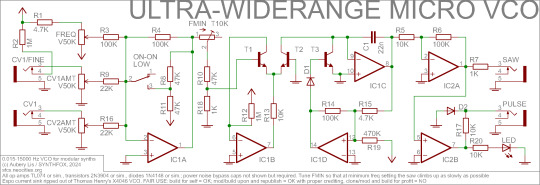
(i actually think the only reason it doesn't heat up is because TL07x are too slow for that to happen lmfao)
24 notes
·
View notes
Text
Also I responded to someone who found the Gintama girls stereotypical.
I don’t think the women of Gintama are just stereotypes. We get to see into their thought processes and inner lives and all of them are distinct and interesting. Like in Benizakura when Otae is watching over an injured Gin on Shinpachi’s request, she’s balancing a bunch of conflicting obligations in a really elegant way. She knows Gintoki and can see he needs to go help, but she can’t just tell Gintoki to go because she promised Shinpachi. So she pretends to let Gintoki sneak out. But she also genuinely wants him to be safe, even though she agrees with him going out to fight. So she leaves her umbrella with a note to return it, subtly making him promise to return alive. And what stereotype is Otae supposed to fill? She’s the violent woman of the cast. This kind of complex character work is not typical for this stereotype. There’s too much thought and work put into Gintama’s female cast for me to consider any of them stereotypical.
30 notes
·
View notes
Text
On Thursday, Joe Rogan and Marvel megastar Josh Brolin traded stories about the preponderance of Covid vaccine injuries among their friends. Brolin even described contracting “a mild case of Bell’s palsy” earlier this year, which Rogan attributed to the vaccine, noting he knew several people who suffered facial paralysis following Covid vaccination.
There is no perfect medicine. The benefits and harms of any treatment must be carefully considered in order to prescribe the safest, most effective course of action for a patient. While the FDA and CDC continue to extol the benefits of the Covid vaccines, they have ignored a growing body of evidence that these products can also be harmful. The code of medical ethics demands a transparent and balanced accounting of their impact on the American people. Only then can we set the best course for healthcare policy and future pandemics.
An honest accounting begins with clinical trials, supposedly “the most rigorous in history.” Pfizer’s own legal arguments suggest otherwise. Responding to a whistleblower lawsuit alleging major deviations from protocol, Pfizer’s lawyers noted that the company’s “Other Transactions Authority” agreement (OTA) with the Pentagon didn’t require clinical trials to comply with FDA regulations because the vaccine was a military prototype for “medical countermeasures.” This agreement allowed Pfizer to “grade its own homework,” so to speak — a point emphasized by DOJ lawyers in a separate filing in Pfizer’s support.
The FDA intended to keep Pfizer’s data hidden for 75 years, but attorney Aaron Siri’s FOIA lawsuit forced the agency to release them. Naomi Wolf’s DailyClout led 3,250 volunteer experts in analyzing more than 450,000 pages of internal Pfizer documents and uncovered massive harms ignored by the FDA, detailed in The Pfizer Papers: Pfizer’s Crimes Against Humanity.
13 notes
·
View notes
Text
Character Birthday Masterlist
This is as many birthdays as I could find for all the games I have played and anime's I have watched. Trust me there are more characters but some have no birthday dates posted. I will update this list as I go but you can always find this on my pinned post to come back and check the birthday calendars for each. I did want to do a calendar itself for each month but when so many have the same birthdate I found this harder to do so chose to just do a master list instead.
There was so many birthdays I had to start a 2nd list here is the link to the 2nd one HERE
------------------------------------------------------------------------------
January
1st Natsume Asahina - Brothers Conflict
1st Yuito Sumeragi - Scarlet Nexus
3rd Wataru Asahina - Brothers Conflict
6th Herlock Sholmes - Code Realize
7th Saibara Kamui - Paradigm Parodox
9th Thoma - Genshin Impact
10th Yukichi Fukuzawa - Bungo Stray Dogs
11th Satoru Watabe - Stand My Hero
11th Eisuke Ichinomiya - Kissed by the Baddest Bidder
12th Gary - 100 Sleeping Princes and the Kingdom Of Dreams
13th Hades Aidoneus - Kamigami No Asobi
13th Victor - Mr Love Queens Choice
14th Kosuke Misaki - Tomo-chan Is A Girl
16th Vlad Garfunkel - Phantom In The Twilight
18th Henri Lambert - Piofiore Fated Memories/1926
19th Edgar Allan Poe -Bungo Stray Dogs
21st Sirius Dieke - My Next Life as a Villainess
21st Rui Sagisawa - Nil Admirari no Tenbin
23rd Camus - Uta no Prince-sama
27th Urie Sogami - Dance With Devils
28th Kou Mukami - Diabolik Lovers
29th Kanato Hibiki - Maji Kyun! Renaissance
31st Mozu - Bustafellows
February
2nd Lyney - Genshin Impact
4th Gin Akutagawa - Bungo Stray Dogs
5th Takamasa Saeki - My Forged Wedding
8th Allan Melville - Cupid Parasite
9th Abraham Van Helsing - Code Realize
11th Alhaitham - Genshin Impact
12th Tsukito Totsuka - Kamigami No Asobi
13th Merenice - Cupid Parasite
14th Ren Jinguji - Uta no Prince-sama
14th Hatori Otani - Stand My Heroes
15th Arashi Spring - Scarlet Nexus
17th Soryu Oh - Kissed by the Baddest Bidder
17th Fubuki Spring - Scarlet Nexus
20th Tifalia - Radiant Tale
21st Ririchiyo Shirakiin - Inu x Boku SS
22nd Kei Okazaki - Collar X Malice
22nd Yoshikazu Miyano - Sasaki to Miyano
22nd Monet Tsukushi - Magic Kyun! Renaissance
22nd Misuzu Gundo - Tomo-chan Is A Girl
22nd Louis Asahina - Brothers Conflict
26th Sophia Ascart - My Next Life as a Villainess
28th Light Yagami - Death Note
March
1st Ai Mikaze - Uta no Prince-sama
1st Ryuunosuke Akutagawa - Bungo Stray Dogs
2nd Raeliana McMillan - Why Raeliana Ended Up at the Duke's/M
3rd Ukyo - Amnesia Memories
3rd Yuki Itose - Sign Of Affection
3rd Lindo Tachibana - Dance With Devils
3rd Naomi Randall - Scarlet Nexus
6th Rafayel - Love And Deepspace
7th March 7th - Honkai Star Rail
8th Carol Olston - Tomo-chan Is A Girl
9th Mayuzumi Shion - Variable Baricade
18th Tsugumi Kuze - Nil Admirari no Tenbin
19th Ion - Radiant Tale
20th Sakami Laito - Diabolik Lovers
20th Takeru Totsuka - Kamigamin No Asobi
21st Kanato Sakamaki -Diabolik Lovers
22nd Ayato Sakamaki - Diabolik Lovers
25th Rintaro Tatewaki - Magic Kyun! Renaissance
25th Shiden Ritter - Scarlet Nexus
26th Kamisato Ayato -Genshin Impact
27th Keith Powell - Sugar Apple Fairy Tale
31st Yusuke Asahina - Brothers Conflict
April
1st Kyosuke Tsuduki - Stand My Heroes
1st Scarecrow - Bustafellow
1st Avi - 100 Sleeping Princes and the Kingdom of Dreams
1st Kodama Melone - Scarlet Nexus
2nd Masato Hanzawa - Sasaki and Miyano
3rd Noah Volstaire Wynknight - Why Raeliana Ended Up Duke's/M
4th Canus Espada - Cafe Enchante
8th Yagami Nayuta - Variable Baricade
8th Rowan - Dance With Devils
9th Kiro - Mr Love Queens Choice
10th Takatoo Tokio - Paradigm Parodox
11th Otoya Ittoki - Uta no Prince-sama
11th Zen Wistaria - Snow White With The Red Hair
12th Toma - Amnesia Memories
12th Ota Kisaki - Kissed by the Baddest Bidder
13th Kagerou Shoukiin - Inu x Boku Secret Service
14th Jinnia - Radiant Tale
15th Jirou Ogasawara - Sasaki and Miyano
15th Hayato Ozaki - Nil Admirari no Tenbin
15th Himari Momochi - The Demon Prince of Momochi House
16th Baileu Ton - Phantom in the Twilight
17th Xiao - Genshin Impact
17th Lori Asahina - Brothers Conflict
17th Enomoto Mineo - Collar x Malice
19th Miyo - My Happy Marriage
22nd Yakumo Sumeragi - Scarlet Nexus
23rd Orlok - Piofiore
24th Ruki Mukami - Diabolik Lovers
24th Masaomi Asahina - Brothers Conflict
25th Baizhu - Genshin Impact
29th Chuuya Nakahara - Bungo Stray Dogs
29th Balder Hringhorni - Kamigami No Asobi
30th Diluc - Genshin Impact
May
2nd Ichiyou Higuchi - Variable Barricade
4th Tsugumi Nazar -Scarlet Nexus
5th Atsushi Nakajima - Bungo Stray Dogs
5th Shougo Ukawa - Nil Admirari no Tenbin
9th Akane Kinoshita - Loving Yamada Level 999
9th Aoi Nanamori - The Demon Prince of Momochi House
12th Mamiya Ayumu - Paradigm Parodox
13th Kaito Sumeragi - Scarlet Nexus
15th Karuta Roromiya - Inu x Boku SS
17th Leo Cavagnis - Piofiore
17th Radie - Radiant Tale
17th Impey Barbicane - Code Realize
18th Aki Myojin - Sweet Punishment
18th Gorou - Genshin Impact
21st Rosso - 100 Sleeping Princes and the Kingdom of Dreams
23rd Sosei Arakida - Stand My Hero
26th Luke Bowen - Phantom In The Twilight
28th Kaname Asahina - Brothers Conflict
June
1st Ikki - Amnesia Memories
1st Kotaro Yui - Stand My Hero
1st Arataki Itto - Genshin Impact
2nd Shiki Natsumezaka - Dance With Devils
5th Ibuki - Paradigm Parodox
5th Nagi Karman - Scarlet Nexus
6th Anubis Ma'at - Kamigami No Asobi
8th Sasazuka Takeru - Collar x Malice
9th Natsuki Shinomiya - Uta no Prince-sama
9th Syo Kurusu - Uta no Prince-sama
10th Kasane Randall - Scarlet Nexus
11th Lynette Mirror - Cupid Parasite
11th Eita Sasaki - Loving Yamada at Lv999!
14th Renshou Sorinozuka - Inu x Boku SS
15th Anne Halford - Sugar Apple Fairy Tale
17th Shuumei Sasaki - Sasaki and Miyano
19th Osamu Dazai - Bungo Stray Dogs
23rd Cyno - Genshin Impact
23rd Erika Shinohara - Wolf Girl & The Black Prince
24th Katarina Claes - My Next Life As A Villainess
25th Shirayuki - Snow White With The Red Hair
26th Shu - Bustafellows
26th Seto Narukami - Scarlet Nexus
27th Gilbert - 100 Sleeping Princes and the Kingdom of Dreams
28th Nicola Francesca - Piofiore
30th Shuichi Hishikura - Kissed by the Baddest Bidder
July
1st Gemma Garrison - Scarlet Nexus
2nd Ema Asahina - Brothers Conflict
4th Nathaniel Hawthorne - Bungo Stray Dogs
4th Kyouya Sata - Wolf Girl & Black Prince
7th Fuuto Asahina - Brothers Conflict
7th Il Fado de Rie - Cafe Enchante
7th Tomo Aizawa - Tomo-chan Is A Girl
8th Gonzaburou Tashiro - Sasaki and Miyano
9th Kaveh - Genshin Impact
7th Alice Ichijo - Scarlet Nexus
13th Mitsumori Ichiya - Variable Barricade
13th Reiji Kotobuki - Uta no Prince-sama
13th Kazu - Variable Barricade
13th Joe Sumeragi - Scarlet Nexus
16th Gill Lovecraft - Cupid Parasite
20th Tartaglia - Genshin Impact
23rd Yuma Mukami - Diabolik Lovers
24th Junichirou Tanizaki - Bungo Stray Dogs
24th Limbo - Bustafellows
26th Gilbert Redford - Piofiore
30th Michizou Tachihara - Bungo Stray Dogs
30th Rishe Imgard Wertsner - 7th Loop
August
1st Hikaru Asahina - Brothers Conflict
1st Apollon Agana Belea - Kamigami No Asobi
1st Taiga Hirano - Sasaki and Miyano
2nd Saint Germain - Code Realize
6th Tokiya Ichinose - Uta no Prince-sama
7th Toujou Hibari - Variable Barricade
8th Ignis Carbunculus - Cafe Enchante
10th Mitsunari Baba - Kissed by the Baddest Bidder
15th Louis Anjo - Magic Kyun Renaissance
16th Hanabi Ichijo - Scarlet Nexus
20th Alan Stuart - My Next Life As A Villainess
20th Geordo Stuart - My Next Life As A Villainess
22nd Vilio - Radiant Tale
23rd Tomitsuka Ryou - Paradigm Parodox
26th Victor Frankenstein - Code Realize
27th Kenji Miyazawa - Bungo Stray Dogs
29th Reiji Sakamaki - Diabolik Lovers
29th Zange Natsume - Inu x Boku SS
30th Doppo Kunikida - Bungo Stray Dogs
September
5th Yanagi Aiji - Collar x Malice
5th Zayne - Love And Deepspace
10th Maria Campbell - My Next Life As A Villainess
12th Kagero Donne - Scarlet Nexus
13th Albedo - Genshin Impact
14th Tasuku Kuresawa - Sasaki and Miyano
16th Douglas - 100 Sleeping Princes and the Kingdom of Dreams
17th Dante Falzone - Piofiore
17th Teika Ichijoji - Magic Kyun - Renaissance
17th Kasuga - Variable Barricade
17th Araki Mihaya - Paradigm Parodox
19th Yukinami - Paradigm Parodox
19th Hisui Hoshikawa - Nil Admirari no Tenbin
21st Mamoru Kishi - Kissed by the Baddest Bidder
21st Akito Yamada - Loving Yamada Lvl 999!
22nd Subaru Asahina - Brothers Conflict
23rd Dionysus Thyrsos - Kamigami No Asobi
23rd Kent - Amnesia Memories
23rd Tsuki Aoyama - Stand My Hero
28th Rindo Kaoru - Cafe Enchante
29th Ranmaru Kurosaki - Uta no Prince sama
Octomber
7th Makoto Tsuduki - Stand My Hero
10th Banri Watanuki - Inu x Boku SS
10th Luka Travers - Scarlet Nexus
15th Paschalia - Radiant Tale
16th Xavier - Love And Deepspace
18th Shu Sakamaki - Diabolik Lovers
18th Shizuru Migiwa - Nil Asmirari no Tenbin
19th Hoshino Ichika - Collar x Malice
21st Ranpo Edogawa - Bungo Stray Dogs
24th Loki Laevatein - Kamigami No Asobi
24th Arsène Lupin - Code Realize
26th Sakunosuke Oda - Bungo Stray Dogs
28th Azusa Mukami - Diabolik Lovers
29th Kaedehara Kazuha - Genshin Impact
30th Helvetica - Bustafellows
31st Cecil Aijima - Uta no Prince sama
31st Junichiro Kubota - Tomo chan is a Girl
31st L Lawliet - Death Note
November
4th Subaru from Diabolik Lovers
4th Mary Hunt - My Next Life As A Villainess
4th Kyouka Izumi - Bungo Stray Dogs
8th Ritsuka Tachibana - Dance With Devils
11th Fyodor Dostoyevsky - Bungo Stray Dogs
11th Misyr Rex - Cafe Enchante
15th Lucien - Mr Love Queens Choice
15th Karen Travers - Scarlet Nexus
17th Rem Kaginuki - Dance With Devils
20th Zafora - Radiant Tale
21st Thor Megingjard - Kamigami No Asobi
23rd Wriothesley - Genshin Impact
23rd You Hattori - Stand My Hero
28th Luke Foster - Kissed by the Baddest Bidder
30th Shin - Amnesia Memories
30th Kaeya - Genshin Impact
30th Kyoka Eden - Scarlet Nexus
December
3rd Isurugi Taiga - Variable Barricade
3rd Ukyo - Asahina - Brothers Conflict
5th Tauryu - Phantom In The Twilight
7th Gojo Satoru - Jujutsu Kaisen
7th Akiko Yosano - Bungo Stray Dogs
12th Yang - Piofiore
16th Wataru Frazer - Scarlet Nexus
17th Aoi Suminomiya - Magic Kyun Renaissance
18th Neuvillette - Genshin Impact
18th Yuu Kusakabe - Wolf Girl & Black Prince
19th Soushi Miketsukami - Inu x Boku SS
20th Isaku Senagaki - A Girl And Her Guard Dog
20th Itsuomi Nagi - Sign Of Affection
22nd Keiya Uto - A Girl And Her Guard Dog
23rd Akira Kougami - Nil Asmirari no Tenbin
24th Shiraishi Kageyuki - Collar x Malice
25th Challe Fen Challe - Sugar Apple Fairy Tale
25th Akira Kagiura - Sasaki and Miyano
25th Misa Amane - Death Note
28th Keith Claes - My Next Life As A Villainess
28th Arnold Hein - 7th Loop
29th Masato Hijirikawa - Uta no Prince sama
31st Zhongli - Genshin Impact
31st Hyuga - Paradigm Parodox
31st Tsubaki Asahina - Brothers Conflict
31st Azusa Asahina - Brothers Conflict
#fictional birthday#otome#anime#shoujo#shoujo anime#fictional boyfriend#husbando#otome games#brothers conflict#diabolik lovers#paradigm paradox#cupid parasite#piofiore#collar x malice#my next life as a villianess all routes lead to doom#kamigami no asobi#code realize#amnesia#a girl and her guard dog#7th time loop#genshin impact#variable barricade#cafe enchante#mlqc#love and deepspace#bungo stray dogs#gojo satoru#radiant tale#death note#utapri
55 notes
·
View notes
Text
circle, line
A circle and a line look different, right?

What about now?
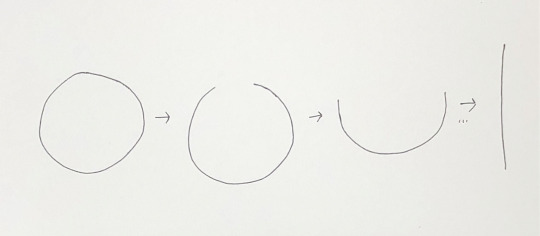
Time in gintama is a useless subject. Unfortunately, it is also a prerequisite to the gintama-human ontology. Thus, with a heavy heart, I look at lines, loops, and other unlikely time-mechanics in order to construct a gintama time for the gintama-human.
Throughout this pseudoscientific inquiry, I locate gintama time– which I eventually call [time], for lack of better notation– in my thematic abuse of two mathematical concepts: irrationality and uncountable infinity. To give away the end, [time] is an uncountable infinity born in irrationality. Which, even to its own creator, makes little sense.
Finally, this is my defense of the gintama time loop. Why? Well, I like loops and loop-like things, and, after all, we want good things to last, to repeat. So this turns out to be a love letter to algebraic topology. Sorry time loop fiction.
Onto more interesting things.
preliminary time notes
To think about time in gintama, I bracket [real world time] from [the narrative structure of gintama, which follows a time] and [time as characters in gintama experience it, i.e. personal time]. The latter two time-categories reflect [real world time] because gintama is written by an author, who, by virtue of existing, lives in [real world time]. That is, while narrative is fun because you can play with reality to make something new (e.g., time loop, time travel, non-chronological narratives in general), creation still requires building blocks, which are ultimately some sort of known assumption, that inevitably require some understanding of actual Time.
All this to say I look at [narrative time] and [personal time] through philosophies about [real world time], which themselves are not especially real; in other words, my methodology is kind of shit.
the situation– personal time
Otae announces the whole of gintama in chapter one.
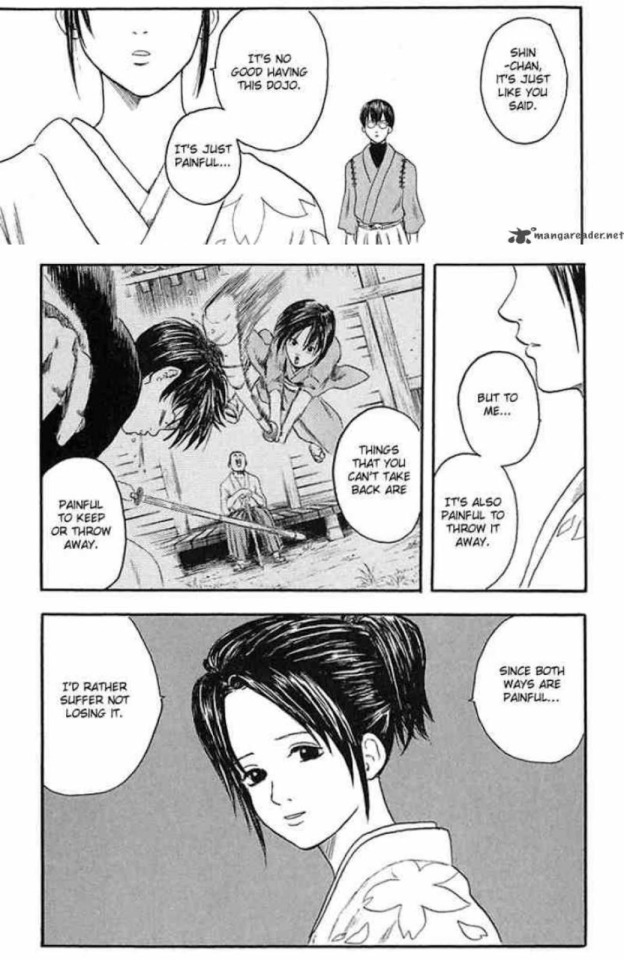
This is gintama’s genetic code.
To speak of time here is to note a few things:
1. amanto possess advanced technology;
2. humans are forced to throw away their physical swords;
3. the sword of the soul.
The sword is a tool*; later chapters tell us that it “carries the soul”. So the sword represents, or, rather, is, something irreplaceable to humanity, that relates to the soul and personhood. This much is corroborated by the plot cycle.
With contrast to the sword, time appears impersonal. We conceive of time, at least scientifically, as the movement between past to present, present to future, stretching infinitely before and after, where our existence does not matter to its flow.
But would “time” exist without anyone to observe it?
Alternatively, how can “time” be experienced as time– as a movement– without anything to measure it?
The human must “create” “time”, if only because it would not be “time” without a person to observe and call it as such. What this person perceives, they conceptualize as movement (measurement); and thus there must be a prior position to reference, or, in the least, a default– a memory.
So “time” requires the present to be given by a prior; that is, for “time” to be experienced, the human who observes it needs already given into a past. The past itself (“knowledge” of the histories that make us who we are, “knowledge” of the tools that allow us to intend various things)– i.e., its inherent “given-ness” to us– depends upon it outliving those who live it. Thus various contexts, with their technologies, arts, and writing (though these are not really separable), function also to contain the essential past-as-memory for those who use and engage with them.
Alright, great, but what does this have to do with the dick-and-balls manga? Nothing, really, except for everything. The amanto (with futuristic technology, in futuristic contexts**) force humans to give up their swords. It would be ridiculous to talk about what the “sword” means here. Suffice to say that it carries (an assumed) cultural-historical weight, an (idealized) memory. We would expect that its dispossession disrupts temporality. And it does– hence the “time loop”.
People love to talk about cyclical time in gintama. It is the same situations, over and over again; that no one ages, injuries heal by the next chapter, and, more than serial-typical regressions, that there is a sense that things won’t work, that important change won’t last, that life “just gets worse and worse”. Time as lasting change– or what we like to call “linear time”– doesn’t feel like it exists.
To return to chapter one. Here the central conflict is not actually between amanto and human; it is between Shinpachi and Otae. Their dying father tells them that even if they give up their physical swords (memory, past), they are not to lose the sword in their soul (?unknown). Sword-less Shinpachi resents him. Rather than “cling to the past”, he tries to adapt to the “linear time” of the amanto: he works in modern food service, gives up on the dojo, and, most importantly, opposes Otae.
What does Otae do? We might expect her to inverse Shinpachi, that is, to “embrace” cyclicality, which would be to give up. She doesn’t. Otae tries to adjust, to make a living and survive, but, unlike her brother, she does so also to protect the “thing she can never take back”. This, as Shinpachi points out, is ridiculous, unrealistic, and makes no sense. And yet it is Otae who is thematically vindicated in the end.
From the first chapter, then, we can construct a sense of [personal time (to the characters)]. Again, for change to exist, there must be a prior form; that is, a certain sort of time is what makes change (technological, political, situational advancement) possible. Further, the self is involved in the process of time. Thus when the self is not whole (lacks the sword), time, and thereby change, becomes cyclical. So “time”, to the amanto, advances, because they can work with their external “selves” (technology, worlds, knowledge-memory) to “make change”. But time, to humanity, loops back on itself, is stopped, because humanity is bereft of its self and can only return to the starting point.
We notice that humans still live in a world where time progresses– where time goes on without them. There is a split between the time of the self and the time of the world. Shinpachi decides to do away with memory and join the world-time, the “linear time”, that is, the time of futuristic technology and change; but his sister, who goes along with this and drags the past with her, does much better.
For a more thorough application of this thought, please rewatch the monkey hunter arc.
*It is also (obviously) a dick. **This reveals some connection between the concepts of “tool”, “context”, and time. Though I say so inverse-facetiously, since nothing about gintama can be taken as if it were serious.
time loop– narrative time
So what about infinity?
Personal time is not infinity. In a first sense, it simply is not infinite– characters die. In a second sense, even considering that memory can be (haphazardly) preserved beyond a lifetime, especially in a story, humanity as a whole is finite– there comes a point, eventually, where no one is left to do the remembering. And in a third sense, personal time is still a string of pasts that were once presents, into futures that will be presents; though this finite string might divide into an infinite number of presents, its divisibility renders it still essentially patterned, which is to say that it is not really “infinity”– it is still mathematically countable.
I mentioned a dysfunction of personal time into cyclical (“un-change-able”) personal time. This is associated with sword-less-ness, equivalently memory-loss, equivalently not being a whole self. The fun of stories is that “character” can be projected into the structure of the story itself; it would make sense for cyclical personal time to have some correspondence to, or at least effect on, narrative time, that is, narrative structure.
At this point I should be more general about the time loop.
The time loop is thought to stand opposed to “linear time” in the stagnation-change, lack-presence, circle(hole)-line([censored]) dichotomy. Specifically, the time loop is opposed to “linear time” in the sense that nothing (usually) changes in a time loop. Or, more exactly, change is slow, nothing gets “better” in any real sense. Again, only where time flows “linearly" can we build off of what is prior, can we intend and achieve a future, can we change for the better (or so we assume). Thus the time loop carries a sort of moral condemnation in its very structure— a karmic debt, if you will.
Characters in plots get thrown into time loops because something has gone wrong. Whether or not they are the direct cause, the character must “figure something out”, “learn a lesson”, that is, address the problem that created the time loop, which will almost always be related to a step within the story of their self-development, in order to escape it. The point of the story is to escape it. This is just how stories go.
Then the gintama narrative “time loop” is barely a time loop. It repeats itself, sure, and no one ages, but that’s because no one should age in a wsj serial and sorachi tried to be funny about it. Still, some lingering sense of futility, or maybe just the sheer repetition of the same event for 16 years of serialization, weighs on anyone who reads it. This kind of feels like time loop fiction; there should be a point to the plot cycles. What are they trying to force Gintoki to do, to show us in his character? What are they aiming for, what is driving the “time loop” in the first place?
Takasugi is driving the time loop.
(More specifically, Takasugi’s crushed eye-ball (soul), his eyelid; inaccessible past (memory), is driving the time loop.)
Another clarification. Personal time is time as experienced by the person; it is pure interiority. Thus, while the world moves on– personal time is time as movement– the person may not.
For the person to move on, they must be able to make change, that is, from a prior form, give birth to the next form. This is because only the person can observe, know, and experience “time”, which itself is a movement (a change in position) from past to present, present to future, that is defined by the person. So change and time-as-movement, within personal time, look synonymous.
Further, movement in personal time requires the given past– the memory, from before me, passed down to me by people and places and things and contexts that I outlive– to be held by me, to be part of the “I”, and thus for my bodily self and my non-embodied self to generate personal time together. In gintama, I locate “memory” as the sword. But gintama’s sword is also part of the Self; so personal time in which the Self can move is only born out of a whole self. Equivalently, personal time is not the Self, but it is intimately related to a change that can only be wrought by the Self, which is to say, both my body and my given memory are necessary to the movement of personal time.
In any case, “gin-tama” is about Gin-toki, and, quite literally, his soul, so we would suspect that narrative time is a projection of Gintoki’s personal time. But narrative time cycles weirdly, and Gintoki still has his sword. Alternatively: if Gintoki was not already a Self, that is, if he had to learn some lesson to become a Self through the time loop, how could he have saved any of the endless roster of villains that conveyor-belts around him? So maybe Gintoki holds his sword without remembering– except that he doesn’t, and the story makes this clear (“I haven’t lost a single thing”). He does, however, seem to possess a slightly different personal time. He and his sword remind antagonists of what they’ve forgotten, and these antagonists sometimes move forward with him into the next cycle. In other words, there is some sort of movement, a change, in the narrative, in the structure, associated with each loop.
But cycles stay cycles, up to a very particular moment.
At which point I revert to the most obvious advantage of narrative time: it interacts with the readers. Gintoki “is” a Self (in the sense that an electron is both a wave and a particle), who carries his sword, who remembers, who hasn’t lost a single thing. Yet the time around him repeats the same events, over and over again. Why? Well, in part for the above: every gintama villain needs to learn the same lesson. But every gintama villain is also Gintoki, and even if he remembers, we don’t. To risk being redundant, we, as readers, have no idea what actually happened to him until chapter 519, when it is fished (unwillingly, I think) out of Takasugi’s eyelid.
Then narrative time functions in several senses. It relates to Gintoki’s personal time, but indirectly; more generally it looks like a projection of the Losers’ personal times, where a Loser is one who has lost their sword. Still every Loser is also Gintoki, and every lost sword is lost memory, and even if Gintoki hasn’t forgotten anything– and even if Gintoki carries his past, his sword, with him– we, the readers, don’t. Surely enough, historical time in gintama only begins after chapter 519. The revelation must precede it.
So the gintama time loop is driven forward by whatever it takes for this memory to be revealed. Each iteration brings us closer, but there is no lesson for Gintoki to learn that would speed this up; the heart of it is that he is waiting, he has to wait, for memory to return, for his past to come back to him, and this past is exactly Takasugi.
Why? Takasugi is the past (his eye, his eyelid, is the past); his eye is therefore Gintoki’s sword, the sword of the soul we need for time to move on. But 10 years jump before Takasugi can make the approach, and even then only from behind. Worse, it takes hundreds more chapters for him to work up the resolve to face Gintoki head on. So if Gintoki somehow constrains the world to cyclical time, equally so does Takasugi.
In short, narrative time cannot move until Takasugi’s eye becomes Gintoki’s sword. Thus half of the loop is about Gintoki always standing up again, always waiting for Takasugi to face him, and the other half of the loop, that is, its motivation, is about Takasugi working up the guts, or whatever he does throughout the series, to finally come at Gintoki* face to face. Yes, I’m equating circles and lines, which is silly. But I did this in the beginning anyways. Rewatch the final.
So why does this matter? Readers well-versed in gintama sword theo-ontology may recognize that the sword which is memory is identical to the sword of the human. This is partly because I’ve defined personal time to require the whole Self (the human) to move, which itself requires both the sword-as-memory and its human wielder. It is also because I’ve equated Takasugi to memory instead of treating him like a character (sorry Takasugi). Nevertheless, creation of the human sword (the memory-sword) is now essential to creating time, and creating time is now equivalent to completing the Self, that is, to becoming “human”. Put another way, Shouyou isn’t killed until Gintoki kills him in 519.
More specifically, Gintoki killing Shouyou undoubtedly completes (undoes) his humanity**. It is also the only way for anyone in gintama to have a future, because it creates, gives birth, to time, the time of the series. Further, its revelation births time in the present just as its actuality births time in the past: the Gintoki who swings his human sword, who cries, in Takasugi’s eye, is the one who swings it at him now. Gintama doesn’t actually timeskip until Gintoki kills Utsuro in silver soul.
Then the movement of time, both personal and narrative, requires three things:
1. a memory-sword (the human sword) (the sword of the soul);
2. a human to wield it;
3. and a decision on how to swing
I have discussed one and two to exhaustion. Now we turn to three.
*Gintoki is always Takasugi, in every case. The inverse holds as well. **It also completes Shouyou’s, but that is for later.
in defense of the time loop
Birthing time looks like an escape from the time loop.
This is where the division between time, self, and change becomes essential. Why does the time loop, in many treatments, depress its readers? For the same reason that any tragedy is depressing: fate, un-change-ability, specifically, un-change-ability of things we want to change.
The time loop is a “literalization” of tragedy. The person trapped in the time loop, at best, loses the ability to determine their future, accomplish their projects, do what they want and have it last, that is, to find lasting (exterior) meaning (this is all exterior). At worst, this person carries their incapacity into a loop that is the same tragedy, over and over again, which they are helpless to prevent or change in any way.
This setup is not exclusive to the time loop– other variations could be immortality, reincarnation, oracles, endless linear eternity, et cetera. In every instance, though, the tragedy is that people cannot change the things that matter. And while the time loop usually removes external change to provoke internal change in its protagonist, gintama characters also struggle with the impossibility of changing themselves.
More generally, though, real time isn’t actually cyclical or linear. We move through time, changing form, towards our death– and so the common thought of time is “linear time”, which is really about “linear change” and an inability to “go back”. But time is only known to us, only countable, because of its cyclicality. There are 60 seconds to a minute; 60 minutes to an hour; 24 hours to the day; and then this repeats the next minute, the next hour, the next day; and then the next month, and then the next season, and then the next year; and then it repeats all over again. Time is only measurable, knowable, existent to us because it repeats. If it wasn’t known beforehand, how could we measure the present, the future, against it? And for it to be knowable, it has to be familiar; and for it to be familiar, we must have encountered it before; and here is the inherent repetition– we can’t stop the cyclicality or flow of time anymore than we can avoid our deaths. Real time makes possible our “change” just as it is unchangeable, just as its existence is conditioned on unchangeability.
Gintama is a story, and story time works differently than real time, so maybe in the story we can separate “linear time” (change-ability) from “cyclical time”, from “time loop” (un-change-ability). Even still, what happens after you escape a time loop? Equivalently, what happens after you escape the tragedy? In the usual time loop– at least the usual time loop in our minds– the loop is escaped into linear time, or, more appropriately, it is escaped into the time where linear change is possible. But why is “linear time” the happy ending? Even granted that it exists (which is questionable), what makes linearity better than repetition, that is, why do people love “linear change”?
The Joui 4 lived “linear time” during the war. They fought enemies, and won. They progressed towards something, and believed in it, too; they were the main characters of a power-scaling, battle-shounen manga. And yet, their linear time ended, or more accurately, was never “linear”. Shouyou’s death, if anything, only proved the inherent impossibility of their shounen dreams. So narrative time twists into defeatist cycles, and Takasugi is doomed forever to repeat, and this is probably more accurate to the condition of the actual world they inhabit, because, most importantly, time was always like this, linear change as linear time never existed.
But again, the tragedy was never about the time loop. From its inception, the tragedy has always been about intentionality versus ruination, “I” as capable actor versus “I” as acted upon, and the utter inability of anyone to change any of this. We want out of the time loop because we can’t do anything; we want out because we can’t act out of ourselves to make external change in any way that lasts. Ultimately, we want out of the time loop because we discover that our intentionality actually means jackshit. The world does what I don’t want it to, and traps me in this; I cannot act, and yet it acts on me. My despair at the exterior world which rivets me to itself quickly translates to despair in, at, my self. I can’t make change, so what does being [x person] matter, so this is my fault, so there’s no point in changing myself, so I can’t change myself in any way that matters, because even if I do everything right, there’s no meaningful effect on the world that holds me captive, et cetera. Thus everyone wants out of the tragedy, the time loop.
Including gintama villains, who usually try to get out of it by killing themselves. This never works.
The time loop is tragic because it makes its inhabitants absolutely passive to it and acts on them eternally. The gintama cast is supposedly full of “losers”; its villain of the week, while beating Gintoki, calls him a masterless dog, a ghost, the one who lost, along with the rest of the samurai, et cetera; and the loser here is inherently passive against a winning actor. Nevermind that Gintoki never fought for the Romantic Japan that lost to the amanto– his loss is even more infinite for the narrowness of its scope.
And yet, you’re not supposed to kill yourself.
Escaping the time loop– or, more generally, the tragedy– never guarantees linear time, because we always have to end the book on the happily ever after. So what really happens after you escape the time loop– is linear time actually a relief? Either things start going wrong, which isn’t the linear time ideal, or you achieve every dream, you make possible every impossibility, and come to the end of the infinite series by continuing on within it infinitely. Is that really “happy”?
Alternatively: the cycles of narrative time drive towards the birth of a new time. But the tragedy of the cycles is intentionality/ruination, and the cycles can’t be escaped into their “opposite”. Gintoki, a human, with a human sword, kills Shouyou, and thereby brought forth a new time. And yet, this new time was still cyclical.
Then what’s the solution– killing yourself? Takasugi, repetition Personified, asks this to Gintoki the entire series. Why won’t you stay down?, [Why are you crying?], [Why can’t I comfort you?], Why keep living in this world? Villainy aside, he does have a point– if you look carefully, living in the gintama world is incredibly, incredibly stupid.
Gintoki says: no matter how many times I fall, no matter how many times I fight the same fight over and over again, no matter if it never ends, I will always stand up.
This is the height of stupidity.
[time]
So narrative cycles aim at the revelation of Gintoki’s memory, which would identify sword with eye, tool with wielder, that is, complete the “human”, and thereby give birth to a new (non-linear) time.
Here we get to mathematical infinity.
Mathematical infinity is not a number, or even properly a concept. It’s more like a sign at the edge of a cliff that says, there’s a cliff here, here’s the end of the world– except that this sign also signifies whatever, and everything, that might lie beyond the cliff, which cannot really be called “essence”, or even be said to exist in the first place. In other words, infinity is a marker for a point of no return, that in of itself is nothing.
Some things are said to be “infinite”. Usually, these are patterns. A line is infinite, as is a parabola; but these infinities are predictable, that is, countable, because patterns are rules. Their comprehensibility allows us to treat them like fancy numbers.
Conversely, some functions decompose into situations that are entirely ungraspable. This edge of knowledge, where it devolves into paradox and nonsense, looks like uncountable infinity.
Uncountable infinity is the infinity whose name itself means nothing. It signifies to something that is, by axiom, impossible impossibility, ungraspable. When infinity “interacts” with the mathematical world– or, rather, when we push far enough to reach it– we come to paradox, chaos, and unintelligibility. Certainly, science could advance sufficiently to reconcile the mysteries of particle physics; but the fun of mathematical concepts is that you can define them in any way you like, even if they’re fake. And uncountable infinity is, by my definition, the “thing” that is always uncountable.
So gintama narrative cycles aim at something, while those in cyclical personal times suffer for them. Cycles, better, change-less-ness, correspond to sword-less-ness, to lack of memory, and historical time only “restarts” when Takasugi brings us the past. Et cetera, et cetera, et cetera.
This doesn’t mean our new time won’t be cyclical.
In the end, “time” is associated with sense of Self. This is an unavoidable relation, because time is a human word, in a human language, that describes what is ultimately only known to us as human experience. But “Self” is (itself) a problematic concept. After all, what determines one’s Self? Relatedly, who, and/or what, and/or where, and/or why, gets to possess Selves at all?
Within concepts of Self is often embedded an instinct towards differentiation. The (western philosophical) impulse is to originate this difference in agency: that is, through my free determination of my Will, my Projects, my Actions, and et cetera, I differentiate “I” from “other” and thereby constitute Me. Needless to say, concepts of “agency” are inextricably linked to “change”. Thus, in this particular conception, “time” is bound to “Self”, is bound to “agency”, is bound to “change”, and to invoke any one is to invoke the other three.
Here, “knowing” (as agency) finds itself imperiled. That is, though the “unknowable” would strip agents of acting-ability, “knowing” would also consign existence, life, the universe, et cetera, to determinism. In both cases, “(un)-knowledge” renders the agent passive. Thus someone might long for an unknowable magic in order to undo determinism, just as they might long for the knowledge to successfully determine their life; yet the one who longs for agency could find agency a disappointment, a not-agency. Equally, if the time loop embodies both desires before they collapse into paradox (I can continue into the unknown future if I escape; something is tying me down, my knowledge is insufficient to escape), “linear time” does so as well.
But now we return to infinity, to irrationality, to uncountability, in short, to paradox. The bulk of the previous 5000 words has been to determine that the dichotomy is false. To be straight, knowing and not knowing, agent and non-agent, the linear and the cyclical, are not separable from each other. Their binary is an illusion, and the suggestion of one carries within it the absence of the other; they are synonymous at the exact and every moment they are not. Clearly, this is not not-knowing, and not knowing, and not not-either of them at the same time. I call this uncountable infinity, the mathematically irrational.
The mathematically irrational is paradox. Consider: we can graph, and look at, certain functions, and yet never grasp their value (put x(sin(1/x)) into desmos). Similarly, we know exactly what “pi” is– the ratio of a circle’s circumference to its diameter– and we can define it, use it, find it in every instance. And yet, pi is an irrational number, because its decimals trail off into uncountable infinity. Knowing and not-knowing, united in the same action: irrationality is knowing in not-knowing, not-knowing in knowing, and also neither.
I will be ridiculous and find this paradox in gintama. I want to claim, in the first place, that the self never generated time at all; in the second, that this is never irreducible to agent/acted, knowing/unknown; and in the third, that time is generated by [time]. To do so, we must investigate the moment of its birth, in 519.
the cliff—519
Tools, given memory, etc., together with the persons who hold them, produce an actor-self, a time of possible change (a “linear” time). It is in 519 that Takasugi finally faces the camera.
Now Gintoki grasps the sword (memory, Takasugi). This should give us “linear” time.
But 519 is not so willing. Where we hope for capable agency, we find none. Instead linear/cyclical, active/passive, presence/distance, collapse into irrationality.
Take the archetypical moment. To Takasugi’s why, Gintoki says he’ll stand up. Specifically, he says, too bad– I (you) won’t fall.
Standing up is what Gintoki (a person, with a sword) does. It is how he defeats each suicidal villain, kills Shouyou, and kills Shouyou and Takasugi all over again. This is what the “time loop” would require of him.
Gintama antagonists, those paragons of rationality, tell us that it is irrational.
Otae is also irrational. Her irrationality doesn’t fix anything (⇔escape cyclical time, make change), and she knows so herself– “If I’ll suffer either way, I’d rather suffer protecting it.” 518 chapters later, Gintoki says: “I won’t fall until you [Takasugi] fall, until you stop, no matter how many times it takes, I’ll stand up again… even if I have to walk over my teacher’s corpse, even if I have to walk over your corpse, I’ll protect his disciple, our companion, Shoka Sonjuku’s Takasugi Shinsuke, his soul.”
So Gintoki stand(ing)s up until something– until Takasugi stops, until time is born– in order to protect Takasugi’s soul. This might look like an “end” to the cycle, but it doesn’t feel like one. “Even if I have to walk over your corpse”?
Alternatively, “saving” Takasugi should be the change that the cycles want to make, that would break them in any normal work of time loop fiction. It is “agency” (capable action, material change) at its purest. But Gintoki says he will stand up and kill Takasugi and stand up again. No matter how many times the same thing repeats, no matter if time never moves on, no matter if he is forced to kill the very person he’s trying to protect, Gintoki will stand up. How could Gintoki possibly care about escaping any cycle, when he is the one “perpetuating it”?
So gintama is not actually about escaping the time loop, which is the rational thing to do. Gintama is about, do you have the strength to keep living in the time loop, even if it never ends?, or, do you have the strength to kill your teacher and your friend, and lose everything all over again?, or, do you have the strength to eternally suffer for the thing that can never be taken back? In short: forget the capable actor– gintama is about being foolish, and irrational, and embracing the time loop by standing up.
If we look to chapter one, [standing up] is [protecting the thing that can’t be taken back]. Neither can be appropriately confined to cyclical or linear time. Otae says she’ll suffer either way, and Gintoki says he stands up to protect what Shouyou held precious, Takasugi’s soul.
Otae protects a thing that cannot be taken back. This is the past. Gintoki acts for– and this is also a protecting– the past. Takasugi is, in a literal sense, pierced by this past every moment of his life.
The past that we can recover, that we can fully integrate into ourselves, is the past that can be used to generate the future in “time”. Thus “accepting” the past “to move on” – accepting, making entirely part of oneself, making entirely interior – because only then can the past become knowable, comprehensible, and usable. The person must accept their past to change things, i.e., to make linear time. Time, change, and agency coincide.
Yet Otae’s past “cannot be taken back”. Certainly, even the accepted past cannot be “returned” to. But Otae’s past is the past that pierces Takasugi’s eye– that is, the past whose “revelation”, whose self-same existence, drives the completion/generation of gintama time itself.
So this is the past that “cannot be taken back”, in more than the literal sense. Takasugi is scandalized by its distance, even as he dies satisfied; Gintoki, ever-silent, still loses his composure at its provocation, is emptied by it, cries in 519 (in all of gintama), in 703. It is a past that refuses total use or incorporation; instead it acts on those who carry it, even after person is reconciled to sword (to its memory).
Its paradox in position. Though “the past” is always present (“I haven’t lost anything”, “how long will you keep looking at that crushed eye of yours”), it is simultaneously kept from us by an irreparable distance. Distance, of course, suggests space, which itself suggests a space that is surpassable. But this distance is not spatial– it is temporal. Gintoki carries the past, yet never reveals it to anyone, much less to us; in the end it is Takasugi who has to do the revealing, and even then only after 500 chapters. Further, its revelation actually increases the distance. We grow used to our proximity to Gintoki’s “point of view”, to our role, through him, as protagonist of the story; and here his defining moment is told not through his eyes, but through the eyes of the distant antagonist, whose breaking point is the discovery of the distance between him and Gintoki. Gintoki is reflected– more, revealed to have always been– across a distance that is unsurpassable.
This distance is equally time, because Takasugi and Gintoki were separated always, and only, by “the 10 years”. Takasugi comes to Edo– there is nothing stopping him, spatially, no physical restriction or meaningful law imposed, from making the approach– and yet he cannot make it. Or so we assume. We only know its universal separation axiom: 10 years, a distance between two points that could never be overcome or recuperated.
So the past is across an unsurpassable distance. In this sense, it cannot be taken back. It is simultaneously carried in, pierces, Takasugi’s eye, who struggles because he cannot reconcile it to himself. Just as it is always with him– “every time I look, the beast…”– it is also the one thing he cannot bear to see (your crying face). Though its revelation is necessary to New time, it is also what sent time into irregularity in the first place. And though it is irreparably distant, it pierces every moment of the present, which is to say: it degrades time, it makes things weird.
Its paradox in times. The cliff is pre-originary to everything by narrative position. Gintama narrative cycles press towards its revelation as first dilemma. It is before even the corpse field, before anything else. It drives each time Gintoki swings his sword and reenacts it. The very first moment that Shouyou finds Gintoki, is predated, predicated upon, generated, made possible by, the fact that Gintoki kills him with his sword.
From this past, Gintoki is (in the verb sense). It is ahead of him (in 519) and behind him (before 1). For its sake he “acts” towards a “change” (stands up) that he knows is impossible (“if I have to walk over even your corpse”*). In other words, for sake of this past, Gintoki lives as if he belongs to a “linear” time, even as he knows he doesn’t. The past brings forth itself again.
Finally, its paradox in agency. What is burned onto Takasugi’s eyelid is a single moment he cannot recover or recuperate. Instead, this moment acts on him, it pierces him, against his will. This sort of past is not an empty concept, that could be filled with any given circumstance. Takasugi is tortured because the content matters– because what happens on the cliff that day, matters.
The cliff is not what Takasugi, Gintoki, Shouyou, or anyone else, wanted. Worse, it is not what they fought for: Takasugi to save Shouyou, Gintoki to protect Shouyou’s disciples (in an act that he knows will destroy them), Shouyou to protect his children. Instead Takasugi is stripped of agency, and the eye that would acquire it; in the present he acts on everything because he is, in every moment, acted on. Equally, just as Shouyou tries to protect his students, he destroys them, and Gintoki, who is forced (acted on) to choose (acts on) between two wrongs, two denials of his self** (of linearity), that is, two losses, is the classic agent paradox most of all.
So the past cannot be taken back, and this not only in the sense that no one can return to it. The past cannot be taken back as a memory, nor can it be incorporated as part of the self, nor can it function as the essential memory that projects forward normal time, even as it is known at every single moment. It cannot be domesticated.
Gintoki killing Shouyou, and crying, is unacceptable. It is distance itself, just as it is proximity; it is simultaneously known (Takasugi sees it), unknown (no one can reconcile it), and neither (we still move on). It should not have happened. It is irrationality itself.
And yet, by virtue of being “a past”, in its relation to the present, in its position as driving force of the time of the entire series, it still is time. The human, with the human sword, who cuts off someone’s head, is [time] itself.
Clearly, this is something outside of normal time. The question becomes, who needs to be killed, and where, and why?
The one who gives birth to a future.
*–and he does.
**“No need. They’ll never hold a sword again.”
the future
That Gintoki kills Shouyou is essential.
The start of gintama’s “historical timeline” is the corpse field. Here the time that Gintoki sits in carries a heavy sense of eternity. The moment where Shouyou finds him could be forever; historical time is out of place.
What breaks this time is very particular. It is not that person and sword = human = time in the automatic sense, because Gintoki, who holds a successful sword (“before meeting you, I never lost to an adult”), remains inhuman. Rather, Shouyou, a human (to Gintoki), must give his sword to Gintoki for time to start. This is also what makes Gintoki human. Gintoki, the human, had to be given his humanity– and thereby time– by someone else.
Equivalently, it is not enough for gintama’s [being human] that the right person holds the right sword. Only a human can progress time, that is, give birth to the future, but reconciling self to past, sword to eye, escaping the time loop, is insufficient. That Shouyou finds Gintoki is predicated by the cliff; sword can only become eye through the cliff’s revelation (and the cliff happens concurrently); self and past are reconciled only after Gintoki kills Takasugi; and the Shimura dojo is restored only once the Shimura siblings kill their mentor. It isn’t enough just to hold the sword– you have to actually swing it.
This swing must be something irrational, because everything else is just the natural extension of a person with a sword (it is the person and the sword). Further, the person must make the swing themselves. For it to be a swing they make, they need to choose it. So the swing is a decision made in irrationality.
Swinging a sword at– beheading someone— who is clearly the irrational choice. What goes against the logic of the world, of time, of all the meaning you sought after? Gintoki fought to protect Shouyou’s disciples; but Takasugi tells us that he wanted to save Shouyou more than anyone. Narrative logic says that Shouyou’s disciples should die to save him, and the logic of their linear time– their humanities and their swords– is to rescue Shouyou and progress into the future. Gintoki swings against everything. And cries.
Gintoki stands up, is irrational, for the past that can never be taken back. This past completes his humanity (person, sword, swing) in the moment that it ruins it (he cries). Gintoki kills the one before him(先生) to make them the one behind (into the past); which itself is a loop, is a cycle, but also a line. It is a [being human] that gives birth to an irrational time.
Gintoki kills Shouyou even though it changes nothing. How does this birth time? “Time” comes out of a self, but Gintoki loses his self; “time” is what renders change possible, but Gintoki cannot “save” Shouyou or Takasugi. Certainly Gintoki knows this, and kills Shouyou in spite of it. But how does this bring forth a future at all?
Gintoki does kill Shouyou for something, for some reason, and this is concretely the survival (into the future) of Shouyou’s disciples. Abstractly, though the purpose is less clear– “even if I have to walk over your corpse” – it is still what drives (is the purpose of) every instance that Gintoki, or anyone, stands up.
Gintoki’s purpose is Shouyou’s purpose, and Shouyou dies to give birth to the “future” (a future that is born in irrationality). So when Utsuro comes to kill him, Shouyou sees also Gintoki, and smiles. Sakamoto calls this “hope”.
We are told that Shouyou gives birth to hope– his students– almost as if to invoke the analogy. Shouyou’s disciples– his “children” – are him, because he gave birth to them, and they are not him, because they have a futurity beyond his imagination. Equally, this future is knowable, because the child is you, and time repeats, just as it is not, because the child is not you, and you will not be there to see it. This is the substance of “hope”.
With regards to the structure of his world, his time, and perhaps even his own humanity, Gintoki makes the irrational choice: he stands up. But to stand up is actually for, to give birth to, the uncountable future. Sakamoto tells us that Gintoki “gives birth” to this future in every shounen-bond he ever makes. And here is the paradox, something more generative than irrational dilemma– Gintoki’s “descendants” inherit his soul to be in ways unimaginable to him.
This future pierces every moment, and in the same moment it escapes. Take that Shouyou knows, and cannot know, what his disciples will be. Their possibility is imaginable, in the sense that he can delineate it– “I hope you all find your own bushidous” – but it is also uncountably infinite, because your child is not you and not beholden to your patterns. Equivalently, Otae’s happy memories end when her father dies, but she still keeps the sword of her soul, this unspeakable thing, that past, and it is her purpose in standing up.
Gintoki, with the sword he has been given by a human, kills Shouyou. This gives birth to an uncountable future– uncountable because it is born in irrationality, beyond the possibilities and expectations of pattern, either linear or cyclic– that is an uncountable infinity, and this is [time]. [time] drives, again, pierces, every second of all of time, and in the same moment it escapes. It is also irreparably beyond the one who births it. This is why gintama had to end.
So the human is constituted in the moment of death (⇔the moment of irrational swing), which is to release the future— [time]. In the same moment, humanity, and [time], escapes. But the moment of constitution (⇔ [time]) is what births the next instance of being human, that is, the rest of time.
In the moment before Gintoki’s irrational swing, each [time] was truly infinite. Here possibility is as unthinkable as Gintoki’s heart; there is no better way I can describe this than an uncountable infinity. Gintoki did what he should have (not) (not) have done. Neither he, nor Shouyou, nor Takasugi, Katsura, Oboro, or anyone, could have imagined any possibility for the future that was to come. In its sheer impossibility, this was infinity: the past that cannot be taken back.
But the past that cannot be taken back is also the sword of the soul. By definition, this generates an impossible impossibility, that slips away as soon as it is born; and as the uncountable, that is, the mother of all irrationality, and also its child, [time] has little to say about lines or circles, aside from that they are essentially the same. So gintama never cared about time loops or not: all that matters is if you follow [time] by standing up.
When Gintoki recovers his sword (Takasugi’s eye, Takasugi), he does so amidst a wreckage that looks like pine trees, as Takasugi (the one who finally stood before him, who now will stand behind) dies in his arms. Here, we find that the “cycle” repeats: Gintoki stands up, and the sun rises.
This is the dawn of a new, impossible day.
I don’t think that’s so bad.
#4 months later. i cant articulate the suffering this has brought me. anyways. happy 5 years since 703 LOL#goose tag#gintama
30 notes
·
View notes
Text
267 There was a communication device right in front of Kyuyo's control room - and it was a stroke of luck that a communication device that was still usable remained. After finishing his communication with Katsura, Shoyo turned to Shinpachi, who was waiting nearby, and said, "It's just as I heard. You guys should get out of here as soon as possible." He told him that and hurried on. However, his body was so weakened that he couldn't move as he wanted, and he staggered and put his hand on the communication console. "Mr. Shoyo!" Shinpachi tried to rush over, but he was stopped by his other hand. "It's just flesh and blood... I was living forever, but now I'm being chased by time." I smile bitterly at the constant flow of life, and support myself as I move forward.

268 They were in front of the control room. The door seemed to be sensory and started to open automatically. There must have been a difference in air pressure, as the escaping air turned into a strong wind and blew in. "But this little life I have left is tied to the tall cedar trees. That's why --" Shoyo looked back at Shinpachi and the others before entering the room. "You must protect the future they have spun." "......"

With renewed resolve, I enter the control room, where the wind is blowing wildly. The inside is unexpectedly spacious and bright. The control room is built in a spherical shape, with gun barrel-like devices filling the walls. All of them had their nozzles facing the center of the room. They were probably intended to control the Altana that was being sucked out. The Altana that needed to be controlled swelled up into a twisted, evil-looking ball of light, with bands of light swarming around it like a group of snakes swarming around a ball.
269 .
He struggled to make his way over the bridge to get closer to it --
and when he finally reached the end, he heard the sound of a door closing behind him. At the same time, the typhoon-like wind calmed down, his turbulent hair and cloak regained their composure. Shouyou looked closely at Altana, who looked like she might go wild at any moment, and glad. "Maybe my thousand years have been for this instant. Please hold on...even just a second longer..." He touches his chest and speaks to the heart that shines deep within. "One second won't be enough." He hears a voice from behind him and turns around in surprise. There he sees Shinpachi, Kagura, and Sadaharu. "If we combined everyone's lifespans, we'd be able to see the face of that stupid disciple."

Kagura nodded, and Sadaharu barked "Woof," as if he agreed. Without listening to our warnings, Shinpachi stood behind Shoyo on his left, and Kagura and Sadaharu stood behind him on his right. Myo was nowhere to be seen, but they sensed her presence on the other side of the door, near the communication device.
Although the Starry Sky Cult was annihilated, there was a possibility that the few survivors would become martyrs and attack this place. They probably took the front line to fend them off. "You guys...!" "I'm sorry. We can't just go on like this. "I told you," Shinpachi said, gazing at Altana. Kagura also looked up and continued, "It's your job to get your reward."
3 notes
·
View notes
Text
Kaiju Week in Review (September 3-9, 2023)
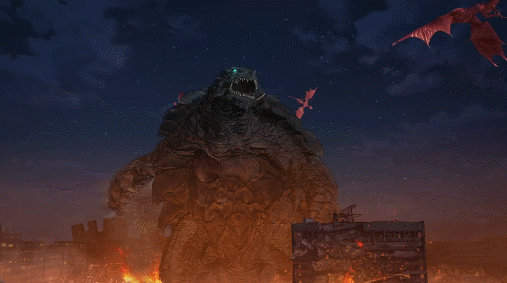
I was a bit nervous about GAMERA -Rebirth-; the animation looked dodgy and Netflix has a shaky track record with kaiju shows. I'm pleased to report this is the best entry in the genre that they've put their name on. Good characters, great action (brutal as always), and actual episodic storytelling that effortlessly weaves in elements from the Showa films beyond all the returning kaiju. Watch it immediately.
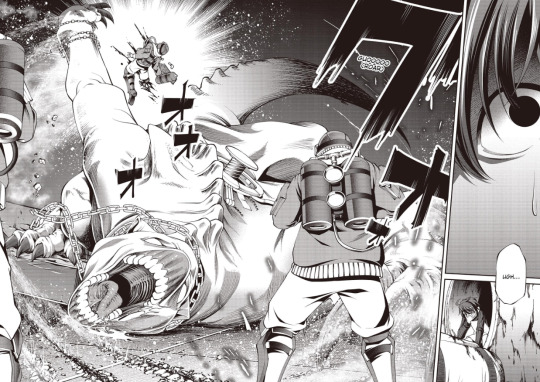
Tie-ins abound for GAMERA -Rebirth-: a two-part novelization, a manga adaptation, and a prequel manga that sheds some light on [UNBELIEVABLY MASSIVE SPOILERS]. That prequel manga (GAMERA -Rebirth- code thyrsos) is being published online for free in both Japanese and English. You can read the first chapter here.

In unofficial translation news, English subtitles for GAMERA.1999 (1999) and yokaipedia (2022) are now available. The former is Hideaki Anno's making-of documentary for Gamera 3: Revenge of Iris; the latter is a fun, child-friendly fantasy from Godzilla Minus One director Takashi Yamazaki with a big ol' centipede-dragon at the end. (It's also maybe the first Japanese kaiju film I've ever seen with a major Black character.) I haven't gotten to GAMERA.1999 yet, though from scrubbing through it, it seems like a lot of dialogue was just ignored by the translator. Shame, as that's one I've wanted for a long time.
youtube
We have a teaser for Monarch: Legacy of Monsters, as well as a premiere date for the first two (out of ten) episodes: November 17. (I am being showered with Media for my 30th birthday.) The big news from this trailer is that John Goodman is reprising his role as Bill Randa from Kong: Skull Island. I assume that's going to be through flashbacks and old recordings only, since he was eaten by a Skullcrawler in that one. We also catch glimpses of two new creatures, a dragon and a crab from what I can tell. The latter looks to be fighting a Mother Longlegs.

Fandango and AMC have added mostly-empty listings for Godzilla 2000 on November 1. Fathom Events screened Godzilla Against Mechagodzilla on November 3 last year; despite randomly showing Tokyo SOS back in March, I gather they're making a tradition out of Godzilla Day. Note that the listed runtime is longer than the film itself. Predictions for the program: another message from Keiji Ota, the 2022 Godzilla vs. Gigan short, and the Japanese version of G2K. Interesting that they're running the last Toho Godzilla film to receive a wide release in the U.S. exactly a month before Godzilla Minus One has a wide release of its own here.

Gamera isn't a meta-defining Godzilla Battle Line unit... but he's Gamera in a Godzilla game, so I've been using him in every match since I unlocked him. He's gearing towards demolishing flying units, with fireballs that deal more damage against them and knock them back. A pity that he's arriving well after those units were at their most dominant.
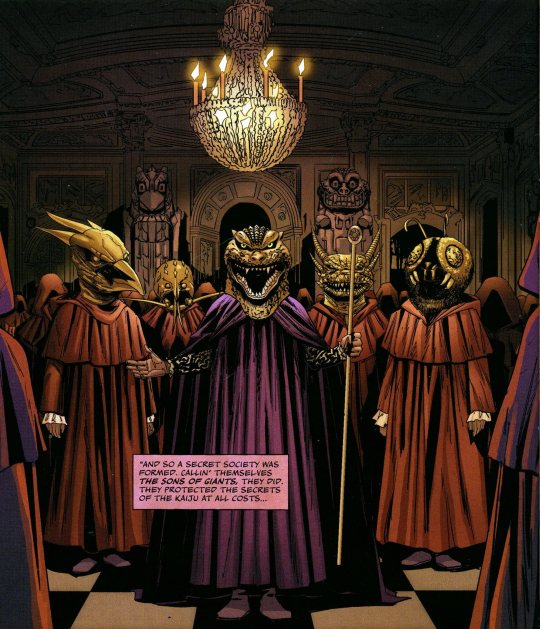
Godzilla: Here There Be Dragons #3 still isn't giving me much to write home about, but the kaiju cult creeping to the forefront intrigues. Also cool to see Ebirah in a starring role.
youtube
Marubeni, one of Japan's biggest general trading companies, put out a bizarre commercial featuring samurai, zombies, a meteor, and a refurbished GMK King Ghidorah. The ad now has English subtitles, and you can watch a Ghidorah-centric behind-the-scenes video here.
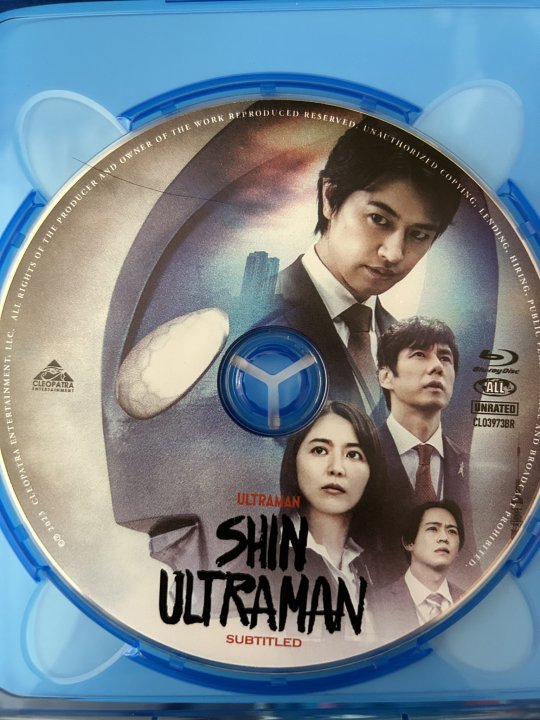
I cannot believe I have more Cleopatra Entertainment fuckery to report on with regards to their Shin Ultraman releases, but they're truly trying to take the "Worst Film Company of 2023" title from the members of the AMPTP. Their third attempt at a barebones disc is starting to reach customers... but the ones who already received the initial replacement disc are being told no more will be sent. @starestream is trying to figure out if they'll be selling the third edition on their site, since it seems buying it anywhere else is a gamble. (Physically, the third edition looks almost the same as the first two, set apart only by the "SUBTITLED" text on the disc.) Either way, it's another blow to a movie that truly doesn't deserve this.
91 notes
·
View notes
Text
youtube
#Harald's Dream - Bogdan Alin Ota#Piano#pdf#violin#guitar#sheet music#flute#notes#music notes#Youtube
0 notes
Text
Doodle Dump, 1/2024 - 4/2024 (part 1)
So uh...I haven't posted as much on here ever since like, the beginning of this year. Instead, I've been doodling like mad over on the OTAS server and have completely neglected to post any of that over here alsdkjalk. So here's most of the doodles I've done, oldest to newest :> (with wild variations in quality,.,,, a lot's changed in my art skillz in 6 months)
[VERY long post below]
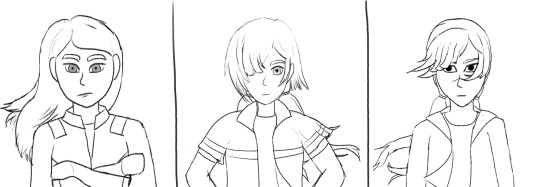
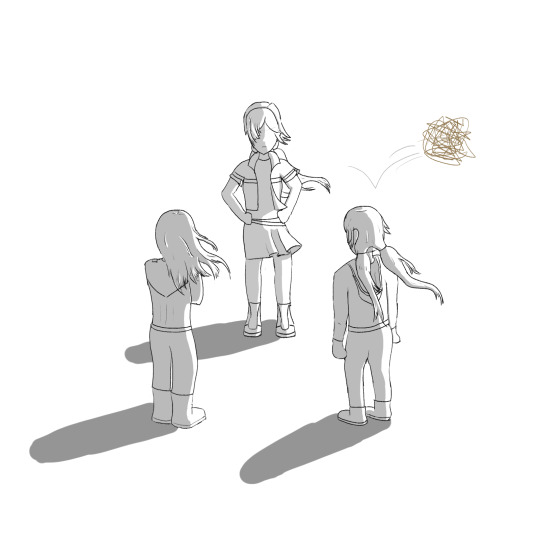
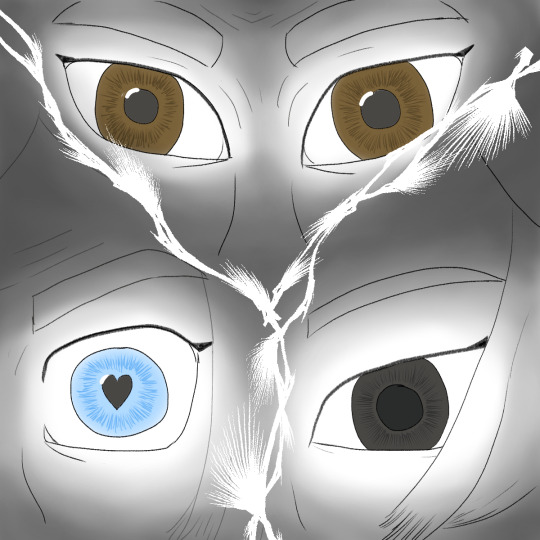

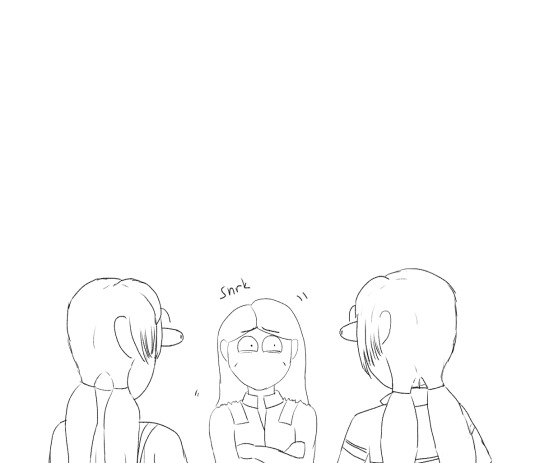

A staring contest, ft. @florisam 's Onyx and @illusidy 's Aerie...queens of the death stare.

Thank @/florisam for this one lol
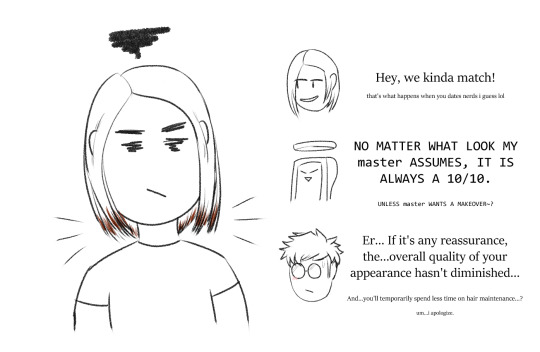
After a body swap AU where Wis swaps with Qi...Wis has to do manual labor with Qi's wimpy wet noodle caffeine dependent body and Qi's def not taking proper care of Wis's body either... probably doesn't put her hair up if he works with a burner or corrosive chemicals aldkfjl
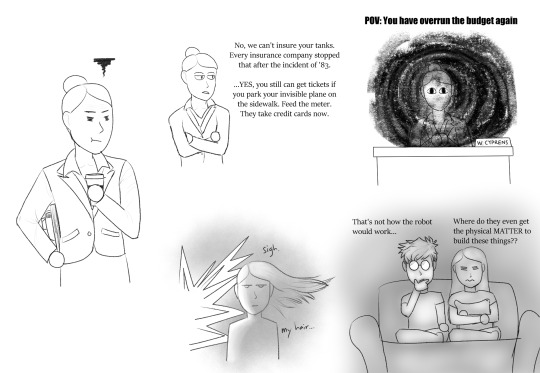
from a superhero/villain AU, wis is neither hero nor villain...she's the civilian that somehow ends up at the epicenter of every super battle and takes advantage of that by becoming a hero/villain accountant 😂
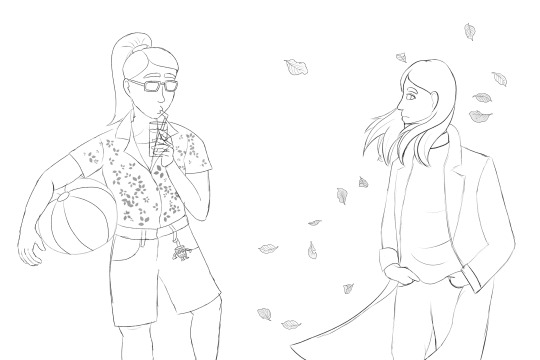
started drawing some more outfits for Wis, but I never finished them. Will probably get back to these a bit later.

and ofc she's gotta try on Qi's disaster outfit asd;lfkdjlrk




I made Wis a logo! Combined a sprig of wisteria with a pine cone, for her workshop, Fresh Pines. Also made a possible combo logo for her and Qi. Y'know, in case they ever make that multistage rocket + launchpad they've been dreaming about...
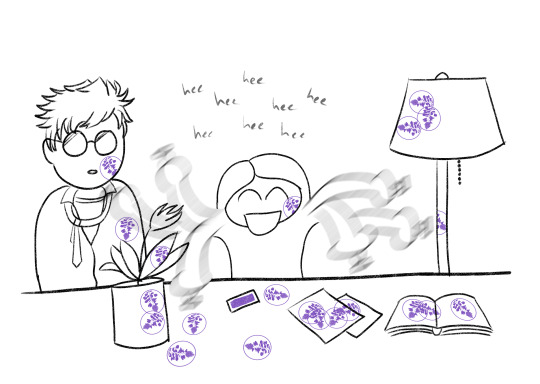
Wis would be stoked to get her new stamps :>
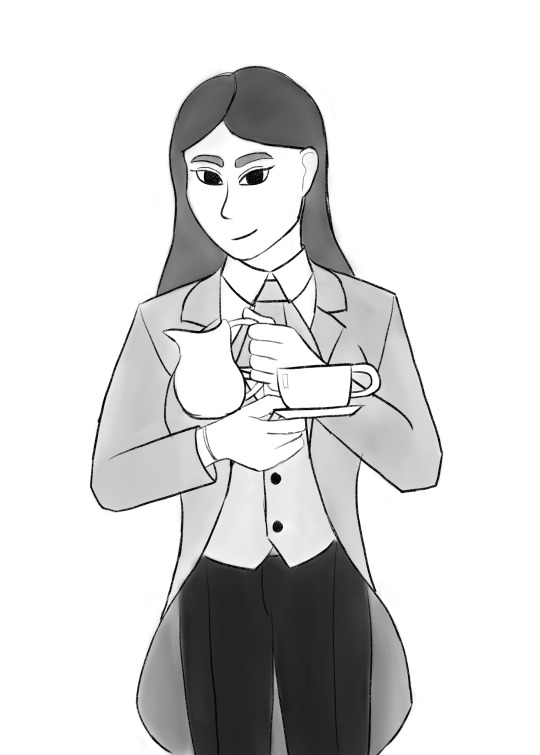

Wis as a butler in a maid cafe AU...that I do not have the space or time to fully outline the extent of the chaos within... (inquire in the OTAS server for more info asdlkjlrkadf) Also the first time I drew Wis's clone sisters (which I am aware that I haven't introduced at all on tumblr...I wouldn't blame you if you forgot that Wis is a clone 😂 but SOON I promise)
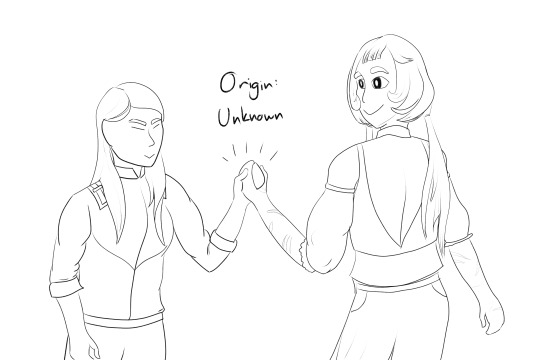

Ft. @spookemsdukems 's "Builder", it's the mystery gorls! No one really knows where they came from. Well, they know. But they're sure as hell not gonna tell you... (ehhh well wis might tell you about herself if you're friends lol)

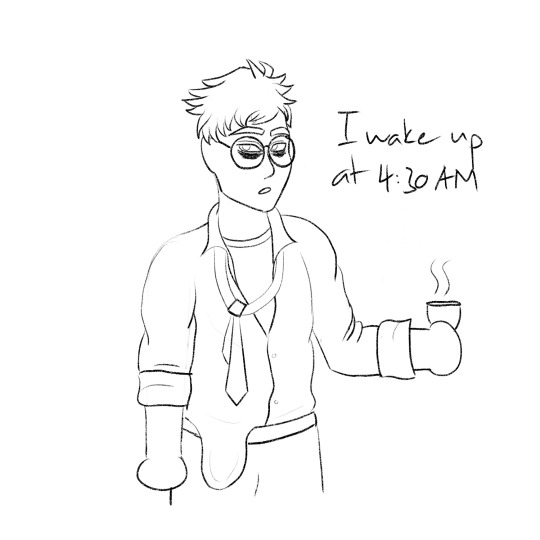

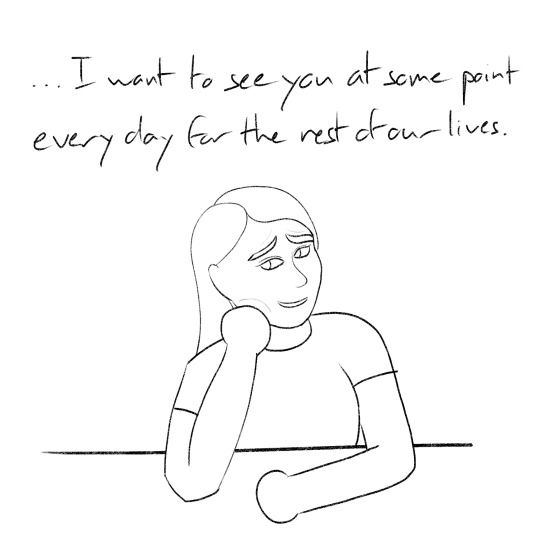
asdlfklj based on a quote from an incorrect quotes generator

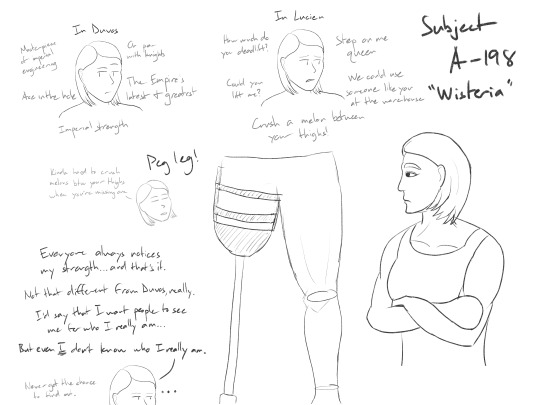
Initial concepts for one of Wis's clone sisters, the one that ended up in Duvos! Eugh the attempt at a waist up in the bottom right corner still haunts me asdlkfjlkjd Also note that that's not what a real prosthetic AK peg leg would look like, I did these without any real research 💀
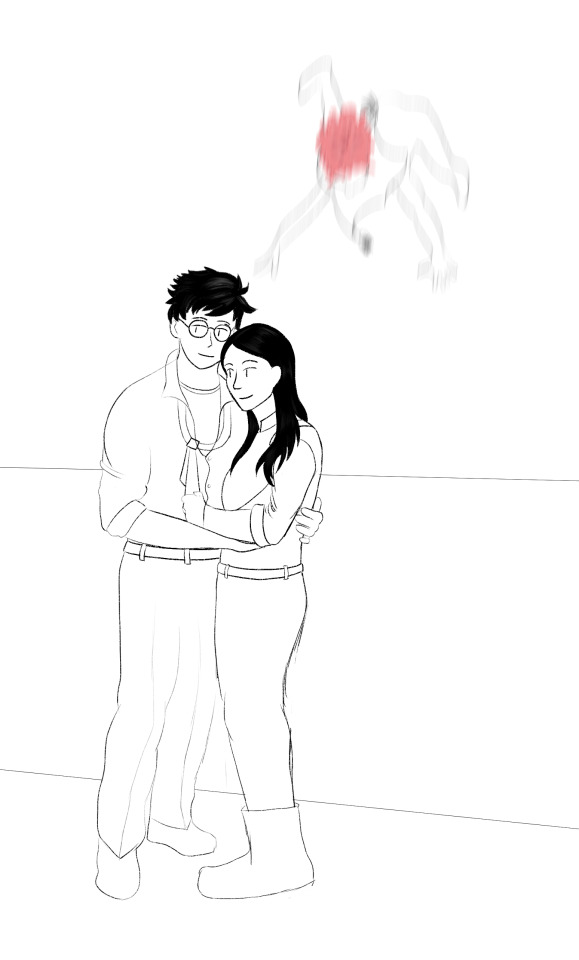

Ft. @sunstream7 's Val...no explanation needed i think alsdkfja;sdlkrj
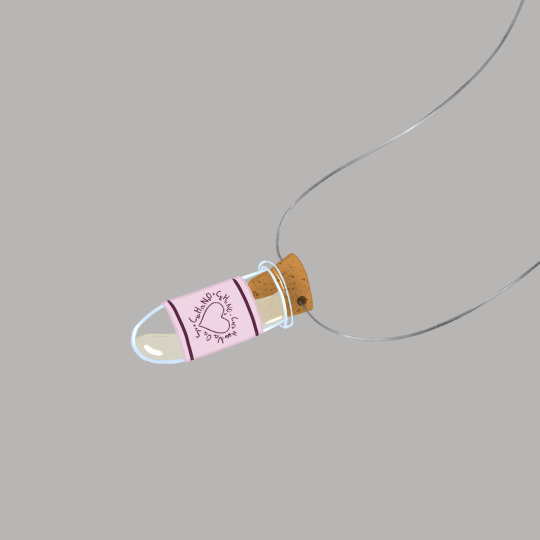
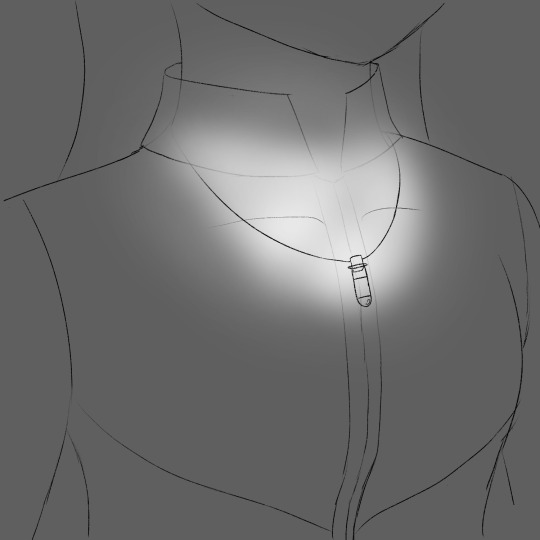
An idea I had about a romance/post-marriage gift that Qi could give you: a necklace with dopamine, serotonin, and oxytocin that he managed to synthesize...the neurotransmitters of love <3
Love is the Solution: A special necklace given to you by Qi. The little vial contains a mix of neurotransmitters--the mixture of love. Even though they're trapped inside the vial, when you put it on, you swear you can feel them surging through your nerves all the same. Stamina +15
And I've hit the image limit so this is the end of part 1 a;sldkrjlkjlakfj
#so yeah i haven't been dead asdlkrlakj#i promise i AM still writing tho. just. slooooowly#my time at sandrock#mtas#mtas qi#mtas builder#mtas wisteria#shady learns 2 art#long post
27 notes
·
View notes
Text
Fairytales [Logan x M!Builder x Owen]
Fandom: My Time at Sandrock
Characters | Ships: Logan/Male Builder/Owen (My Time At Sandrock)
Summary:
Some legends are told while some turn to dust or to gold, but Owen's stories are eternal in Logan's eyes. (Of course, this tale would have a happy ending if Owen and Damien just got together like they were supposed to.) Or: A monster hunter, a Builder, and the Saloon Owner walk into the Blue Moon and try to navigate the tangled threads of their weaving destinies, fake news about the end of times, and messy feelings that tug them all together, inextricably and inevitably.
Notes: For @tyesteban for the otas secret Santa <3 k0fi requests/trades are open!
—
“In years past, drastic measures had taken place as war waged upon the Old World. Men and machines were experimented on and brought to the fullest and most corrupt potential. Mutants rose from seas of toxic wastes and fumes of acidic alacrity, with one of them being the exception.
“The harbinger of doom, the mighty Dragon of Death, had been the cause of the first apocalypse. When the people were forced to flee Underground, it is said that the Dragon grew bored with no prey and fell into a deep sleep in the core of the earth.
“Should it ever awaken once more, the world as we know it could very well end…”
Logan claps at the end of Owen's little story, finding it more entertaining than the sermon at the Church–if a little more embellished. The so-called dragons were probably just the airships with people’s minds spinning stories to calm down restless children and distract adults’ anxious hearts. Anything to pretend that the reality of war was just that–a fairytale.
But Logan knows better.
read the rest on ao3
#my time at sandrock#mtas#mtas logan#mtas owen#logan x owen#logan x builder#owen x builder#logan x builder x owen#my time at sandrock fanfic#eldritch writes#el writes
8 notes
·
View notes
Text
Shimura Shinpachi's Nicknames
A list of Shinpachi's most used nicknames.
Otae: Shin-chan
Gintoki: Shinpachi. Megane. Shinpachi-kun. Megane-kun. Shimura. Patsuan. Shin-chan (drunk).
Kagura: Shinpachi. Megane. Idol otaku. Patsuan.
Kondo: Shinpachi-kun. Megane. Ototo/brother
Hasegawa: Shinpachi-kun. Shimura. Patsuan. Megane
Otose: Shinpachi
Takachin: Shin-chan
Sarutobi: Shinpachi-kun. Megane. Patsuan.
Kyubei: Shinpachi-kun
Hijikata: Megane. Shinpachi-kun. Shimura-shi (as Tosshi)
Sougo: Shinpachi-kun
Saigo: Pachi
Yamazaki: Shinpachi-kun
Seita: Shin-nii
Katsura: Shinpachi-kun
Tojo: Shinpachi-dono
Tama: Shinpachi-sama
Gedomaru: Megane
Soyo: Patsuan-San. Shinpachi-san
Obi Hajime: Shinbo
Otsu fanclub: Captain Shimura.
Sakamoto: Shinpachi-kun
Bansai: Kid/boy
Takasugi: Brat
Otsu: Shinji-kun
Umibozu: Lad. Megane. Shinpachi-kun
Hedoro: Shinpachi-kun
Note: Megane is often traduced as Glasses and Patsuan as Pachi-boy.
17 notes
·
View notes